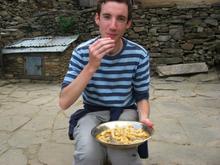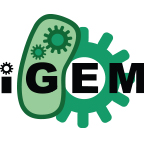News in 2017
- The impact of climate variability on city-level mortality 20 November 2017 In the future, populations are estimated to migrate more towards urban areas increasing the effect of cities trapping more heat than rural areas. The urban environment is the fastest changing in the world, how we interact and depend on it is a question of vital importance. This project seeks to understand how changes in heat stress lead to human mortality in cities across the globe.
- What does climate change look like? 20 November 2017 Bristol-based internationally recognised sculptor and artist, Alice Cunningham, will work with researchers across the University working on the theme of climate change. The aim is to open up dialogue with new audiences and provide a fresh external, artistic and accessible perspective on the science behind climate change and the issues that arise from it.
- Multi-Tier Microgrid Demonstrator and Workshop 12 October 2017 Microgrids – self-contained power systems that can function independently of the national grid – support the move towards a low-carbon economy, utilising distributed, renewable and small-scale electrical generation. This project will construct a microgrid demonstrator and hold a workshop with potential stakeholders to discuss technical, policy, social and economic issues arising from this work.
- Why Micro-Hydro Fails: Investigation into Poor Performance of Micro-Hydropower Plants in Nepal 12 October 2017 There are more than 2,500 micro-hydropower plants in Nepal. When plants break it has significant effects on people’s lives, left without access to electricity for basic lighting and income generation activities. This project seeks to understand the reasons behind the poor performance and failure of micro-hydropower plants in Nepal.
- A feasibility study to explore the links between poverty, flood risk and access to insurance 12 October 2017 Many UK households – particularly those on lower incomes – remain uninsured against flooding. There is limited understanding of who and where is most at risk of being uninsured. This project will bring together hydrologists and social scientists to explore how we can better answer these questions.
- Good things come in small packages – the potential for goats to replace cattle in developing regions, enhancing sustainable food security 12 October 2017 This project will evaluate the potential for replacing cattle with goats in developing regions. Cattle are not always suited to conditions involving extreme climates and low-quality feedstuffs, whereas goats have a greater tolerance for such environments and a greater milk and meat output per unit of bodyweight than cattle.
- Increasing resilience to volcanic hazards through monitoring capacity building in Guatemala 12 October 2017 Millions of people live within 20 kilometres of Guatemala’s three active volcanoes. This project, through co-developed research and training, will build volcano monitoring capacity using unmanned aerial vehicles, aspiring to reduce the risk of disasters posed by volcanic hazards.
- GROUND UP: Understanding Conflict and Environment through Soil 12 October 2017 There might not be much water, but the soils of drylands are thriving with life. This project brings together research into the impact of conflict on dryland environments with a commissioned artist. The artwork will provoke conversations about public perceptions, communicating research and, arts-science collaboration on environmental topics.
- Developing Multi-Dimensional Indicators for Living Well (Vivir Bien) 12 October 2017 Bolivia and Ecuador have proposed Vivir Bien (translated as living well) as a new path to social, ecological and economic sustainability, focussing on meeting human needs whilst respecting environmental limits. This project will work with Bolivian researchers to pilot indicators to enable evaluation of this policy approach.
- Bristol BREATHE Project - iGEM 2017 12 October 2017 Air pollution is responsible for 300 deaths per year in Bristol alone. This project is developing a novel method for removing airborne nitrogen oxide gases using genetically engineered bacteria.
- Building Resilience Against Seismic Hazards in the Eastern Himalaya: From Bhutan to Myanmar 12 October 2017 Myanmar, located in a seismically active region, is one of the poorest nations in Southeast Asia and faces serious social and economic challenges. This scoping study will explore ways to co-develop resilience and research capacity to cope with earthquakes and their cascading effects on the country.
- Bridging the gap between damage and business recovery in developing countries: a quantitative model using satellite recovery indicators 11 October 2017 On average 169 million people are affected by natural disasters each year. The poorest countries suffer the highest casualties and biggest relative economic losses following such disasters. This project will investigate the use of satellite imagery analysis as a low-cost, highly informative indicator for developing countries to measure the speed and quality of recovery.
- Making water resource management decisions more robust and transparent 31 August 2017 Developing coherent and formal approaches for water resource management that will exploit these new sources of information while tackling the challenges posed by environmental change and uncertainty.
- Renewable energy micro-grids 11 August 2017 Designing a methodology and a micro-grid system that could help redress energy imbalances across the world.
- Tidal lagoons and offshore wind 11 August 2017 Designing offshore, renewable energy systems that address issues of expense and under-development when compared to conventional fossil fuel sources and onshore renewables.
- Solar technologies 11 August 2017 Photovoltaic Technology based on Earth Abundant Materials (PVTEAM) & Energy and the physical sciences: Beta-enhanced thermionic energy converters and nuclear batteries employing nanostructured diamond electrodes.
- Resolving the energy trilemma 11 August 2017 Spatial analysis of the civic energy sector and its implications for the energy trilemma.
- Research review shows that safety is valued too low 3 February 2017 New research has shown that the benchmark used by the Office for Nuclear Regulation for judging how much should be spent on nuclear safety has no basis in evidence and places insufficient value on human life. The review suggests it may need to be ten times higher - between £16 million and £22 million per life saved.







